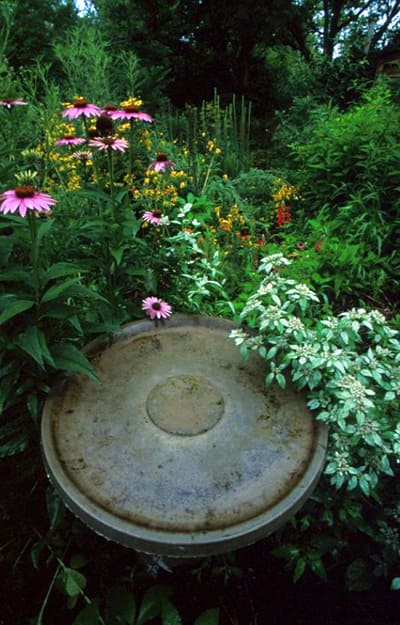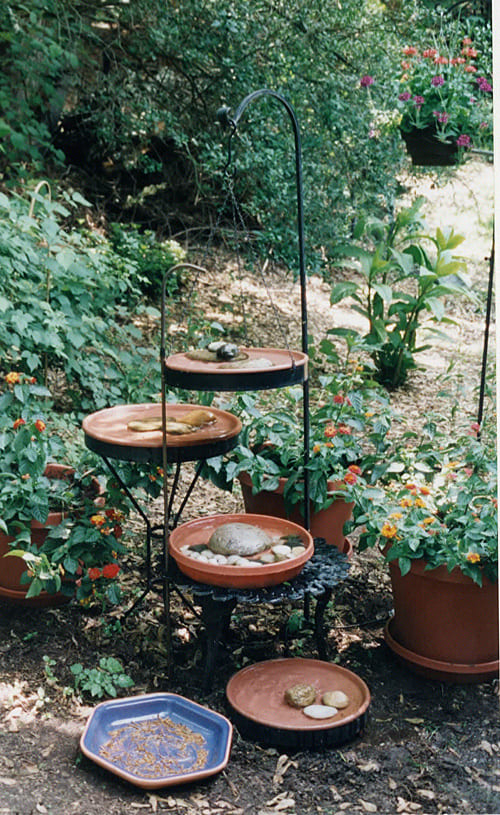Birdbath Basics
Of all the basic elements of a habitat for birds – food, water, shelter, and nesting sites to raise their young – a source of fresh water is often the most difficult to find. Many people overlook this fact when they first begin to create or improve their backyard habitat.
While there are many species that can be attracted by feeders, those that eat primarily insects will not be. However, all birds will seek out water, and your yard will boast a much larger species list if you offer water on a year round basis.

Birds not only need water for drinking but also for bathing, since dirty feathers hamper their ability to fly as well as their ability to insulate themselves against cold weather. Aside from these needs, birds also seem to just plain enjoy a quick “dip in the pool” or a nice, long “soak in the tub.” If you’ve ever had the opportunity to observe an immature bird during one of its first experiences in a birdbath, you’ve most certainly noticed the similarities to a child’s first time in a baby pool, as they jump in and out, over and over again, in absolute delight.

Water features range from the simple to the sublime, with many commercially available products on the market. In addition to misters and drippers, there are re-circulating fountains that can be purchased either separately or contained within an existing bath. Budgets need not stand in your way, however, as you can create a simple dripper with an empty milk jug or by placing a shepherd’s hook over a bath to hold a slowly dripping garden hose. One note of caution: any electrical apparatus should be plugged into a Ground Fault Circuit Interrupter (GFI) socket, and any electrical extension cords should be approved for outdoor use.
The safety of the birds is a critical factor to consider when deciding on the location of any bird bath, but its location should also be in an area where you can observe the birds and their antics as they drink and bathe since some of the best moments in bird-watching involve water. The immediate area surrounding the bath should be clear so that birds have a clear view of any ground predators as they approach. Birds also need a source of cover such as an evergreen shrub or brush pile within 10 feet of the bath so they not only have a place to escape from predators, but also a place where they can perch to preen their wet feathers back into flying condition. Make sure you can see this area, too, as the “toweling-off” preen that follows a bath allows you to see every feather they have.
